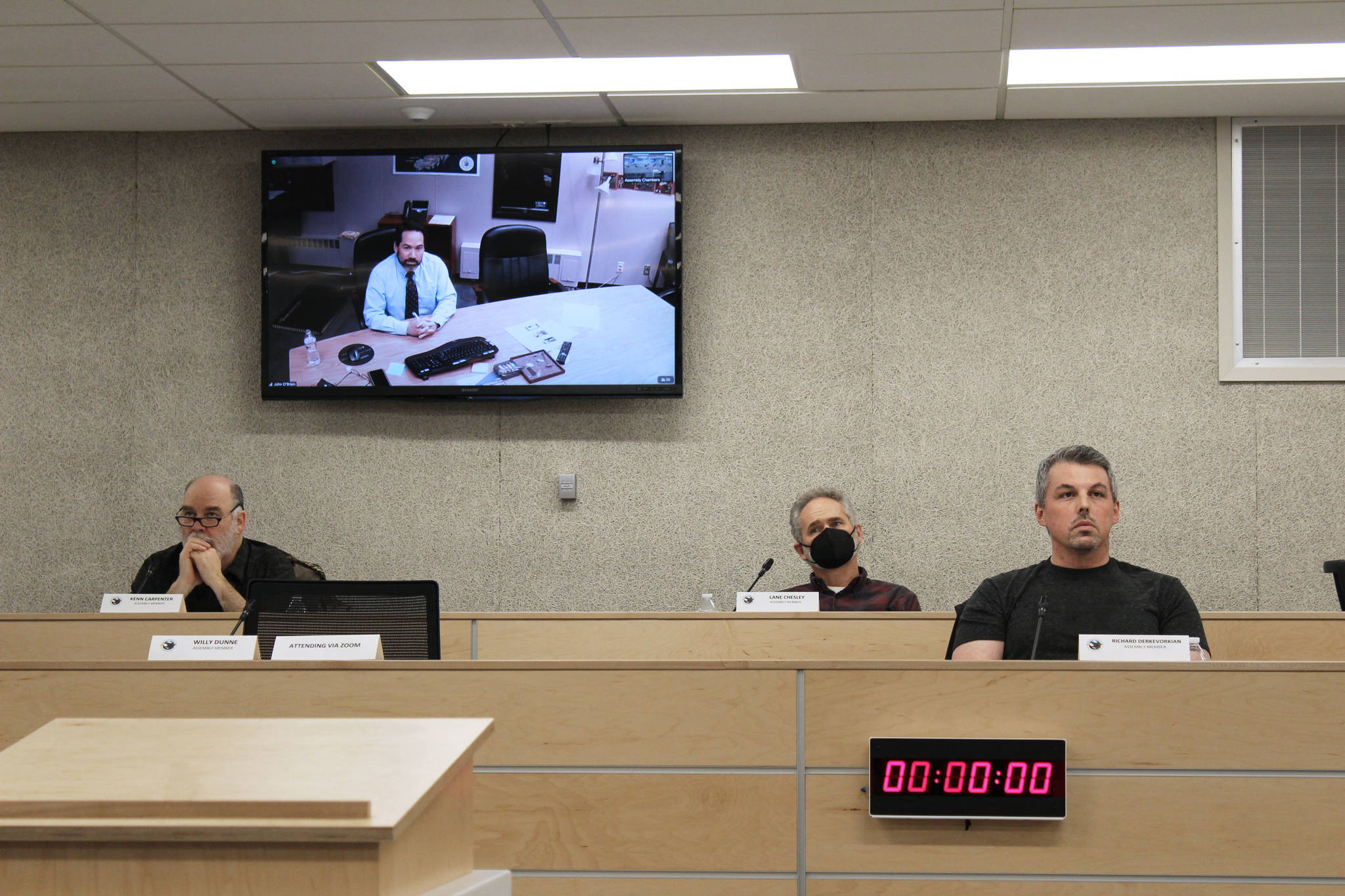Budget negotiations between the Kenai Peninsula Borough School District and the Kenai Peninsula Borough are getting off to a rocky start, with a $10 million difference in funding between what each is proposing for the district.
During a joint work session between the school district and the borough on Tuesday, the school district formally began its budget request. The school district requested about $53 million from the borough, while the borough proposed about $43 million as a minimum amount.
During his quarterly report to the assembly on Tuesday, KPBSD Superintendent John O’Brien said that he was “disappointed” at the $43 million figure presented by the Kenai Peninsula Borough Mayor Charlie Pierce, but that he knows it is just a starting point and that the ultimate dollar amount will ultimately be approved by the assembly and not the mayor.
O’Brien said that the $53 million the district is requesting from the borough already reflects cuts, and that a further reduction of $10 million would mean the loss of 100 teaching positions. That would be in addition to a potential loss of 48 full-time certificated employees and about 10 full-time non-certificated employees due to a projected decrease in enrollment.
Pierce, however, countered that the school district is also receiving federal funding in response to the COVID pandemic that it could use to offset some of the staffing cuts. O’Brien confirmed that the district will be receiving just over $9 million in federal CARES Act funding, but said it is meant to be spent over the course of two years to specifically address students who fell behind academically due to COVID. The district, O’Brien said, wants to use the funds specifically for that purpose to offer things like summer school classes, tutoring and additional instruction from intervention teachers.
“If we were to do what you suggested, and supplant our general fund budget and just keep all of these positions, we’re going to be kind of kicking the can down the road like we have been with our deferred maintenance …” O’Brien said. “The intent of that money is to address the impact of COVID-19 on students and their learning.”
O’Brien said, however, that if there are still “significant shortcomings” in the funding that the district receives from the borough, they may have to reevaluate their plans for the funds which he said they don’t want to have to do.
At a minimum, O’Brien said the district hopes to be funded at $50 million, which is how much they received this year.
Pierce said later in the meeting that he would still have a say in the district’s funding and that it was too early in the budgeting process for people to get “red in the face” about where the numbers stand.
In a presentation during the work session, Kenai Peninsula Borough Finance Director Brandi Harbaugh said that the borough is expecting a significant financial hit due to a loss in sales tax revenue, which she estimated could be a decrease of between 11% and 16%.
In the presentation, Harbaugh also compared how much local contribution funding is provided for each student in the Kenai Peninsula Borough to other boroughs in Alaska, such as Mat-Su and Fairbanks North Star Borough, which is much higher. However, KPBSD Assistant Superintendent of Instructional Support Dave Jones said that comparing the boroughs is like comparing apples and oranges because the figures don’t take into consideration “impact aid” that the district receives because of military bases in the areas. Jones added that KPBSD outperforms those districts academically.
Jones also said that the $43 million proposed by the borough is comparable to what the district received from the borough for FY13 and noted that in years where the borough saw an increase in revenue from sales tax, the district did not receive a corresponding increase in how much money they got from the borough.
Assembly President Brent Hibbert reiterated Harbaugh’s point about sales tax during the borough assembly meeting that night, but assembly member Jesse Bjorkman, who is also a teacher at Nikiski Middle High School, said that how much money the borough gives the district shouldn’t correspond to sales tax revenue.
“Should kids’ opportunity in our district to be able to learn how to read depend on how much we take in in sales tax as a borough? I hope not,” Bjorkman said. “I don’t know that that’s an inviting message for people that we want to have move here to our borough: ‘Hey we’re going to educate your kid really well as long as we have a good tourist season.’”
Pierce said that he expects the final amount of money that the district ultimately receives from the borough will probably be “somewhere in the middle” between the two proposals.
The borough mayor is not expected to present his budget to the assembly for approval until May, with the final hearing in June.
Presentations given by the borough and school district, as well as a video of the work session, can be viewed on the borough and school district websites.
Reach reporter Ashlyn O’Hara at ashlyn.ohara@peninsulaclarion.com.


